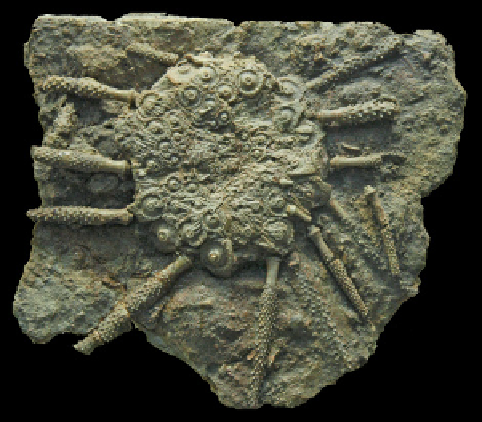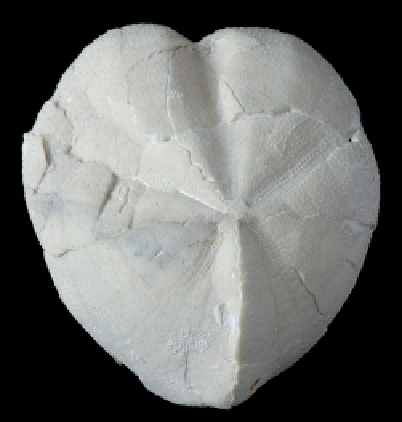Geoscience Reference
In-Depth Information
Worked Example 5.1 Using morphological observations to infer mode of life
5
1 cm
1 cm
(a)
(b)
Figure 5.2
Two echinoid specimens with distinctly different morphologies. (a)
Archaeocidaris
(Robert A.
Spicer, The Open University, UK) and (b)
Micraster
(specimen from Peter R. Sheldon, The Open University,
UK).
In Figure 5.2 two echinoids are shown, one
(taxon A) with a heavily armoured shell and
another (taxon B) with a smoother and more
streamlined shell. These morphological
characteristics can be used to determine which
of these is most likely to be infaunal (i.e. live
within the sediment).
sediment (epifaunal), while the smoother and
more streamlined taxon B was more likely to
burrow in the sediment (infaunal). This is not to
say that all epifaunal organisms are heavily
armoured with spines (some are smooth) but it is
true to say that no burrowing organisms will
have rigid projections that would impede
passage through sediment. Similarly, fossils
representing organisms that live in shallow water
above the fair-weather wave base typically are
more robust than those living in quieter
conditions at depth.
In the case of taxon A the possession of large
spines would generate considerable drag if the
organism were to attempt to burrow in sediment.
It would be reasonable to surmise that taxon A
was more likely to live on the surface of the
The likelihood that an organism will be preserved in the fossil
record depends on: (1) where it dies relative to a depositional
environment (and thus the length of the transport path to that
environment); (2) the nature of that environment (most
importantly its chemistry and the extent to which oxygen is
lacking); (3) the rate of sedimentation and therefore the speed
of burial; (4) the nature of the sediment (fi ne-grained sediment
excludes oxygen better than coarse-grained and better protects
fi ne surface detail); and (5) the mechanical strength and
chemical composition of the organism itself. Animals lacking










